

Air leakage is the largest single waste of energy in most factories and costs you money. Most of the plants have average leakage rates 30% of compressed air system output flow are common and incorrect pressure control combined with leakage can account up to 50% or more of your total energy consumption.
We can provide a leak detection service, quantify the leakage costs and provide a solution to help prevent the re-occurrence of air leaks. All findings and notable highlights from your air leak survey will be effectively communicated and reported to you so that you are fully aware of any necessary repairs and precautionary measures you need to take.
How do think about air leakage?
Unfortunately, air leaks happen more than you think due to wear and tear over the years. By choosing to undergo a compressed air leak survey, you can improve the efficiency of your business, help save money and energy.
If a leak isn’t repaired of fixed, it will continue to cost you money every day. By investing in our air leak surveys and letting our experts identify and stop your air leakage, we can restore the effectiveness and efficiency of your compressors.
If air leakage isn’t seen too as soon as possible, it may cause your compressors to completely break down which may result in investing in a completely brand new compressor. As you can imagine, this is preventable and to be avoided if possible.
Air leaks not only increase energy costs; they also contribute to operating losses and reduced productivity because the pressure drops they create affect the performance of air-operated equipment. Let’s take a closer look at how leaks can translate to large amounts of energy and money being wasted on a daily basis:
Compressed air leaks are simply demands for air that create no value. Further, they consume flow needed by other productive uses. This often results in significantly decreased pressure at the points of use. To compensate, some users will then turn up the pressure at the compressor, which only makes things worse since a leak will waste more air at higher pressure.
Excessive leaks can also cause system pressure to fluctuate, which can cause air-operated equipment to not perform as intended. High scrap rates and automatic equipment shutdown are common symptoms of this problem. A leaky system is also ill-prepared to take on additional capacity when surges in production and growth occur, since the system is already working harder than necessary to meet existing production demands.
Maintaining pressure in a leaky compressed air system requires the compressor to run more. More run time means more frequent maintenance and possibly reduced equipment life. The more you have to repair a compressor, the more (often unscheduled) downtime that compressor will have, further reducing productivity. Ultimately, you may end up replacing the compressor sooner because it’s continually working harder than necessary, thus reducing the overall service life of the system.
Size of Leak | Leakage @ 7 bar | Losses | ||
mm | l/min | kW | Annual Cost – RM (4000 h/y) | Annual Cost - RM (8000 h/y) |
1.0 | 75 | 0.6 | 504 | 1,008 |
1.5 | 150 | 1.3 | 1,820 | 3,640 |
2.0 | 260 | 2.0 | 2,800 | 5,600 |
3.0 | 600 | 4.4 | 6,160 | 12,320 |
4.0 | 1100 | 8.8 | 12,320 | 24,640 |
5.0 | 1700 | 13.2 | 18,480 | 36,960 |
A single small leak of 1mm pinhole may only be 75 l/min or 4.5 m3/h, but for a system that operates throughout the year, that leak could cost you close to RM1,008. A single larger leak of 3mm could be 600 l/min or 36 m3/h, this size of leak is costing you RM12,320 per year. Can you imagine that how many 1mm pinhole or larger leaks are locate inside your compressed air facilities and these leaks are keep blowing your profits away every minutes?
For a compressed air system with a 30% loss of output due to leakage, consider the annual cost with a 150 kW (200 HP) system. If the compressor power has a total of 45 kW in leakage, it could result in an energy expenses of RM126,000 per year at RM0.35 per kWh. As energy costs continue to rise, the expense of wasting money on repairable and avoidable air leaks becomes all the more important
Compressor Size | Assumed 30% Loss |
kW (HP) | kWh |
75 (100) | 22.5 |
150 (200) | 45 |
300 (400) | 90 |
450 (600) | 135 |
600 (800) | 180 |
900 (1200) | 270 |
4000 hr Operation | |
kW/y | RM/y |
90,000 | 31,500 |
180,000 | 63,000 |
360,000 | 1260,000 |
540,000 | 189,000 |
720,000 | 252,000 |
1,080,000 | 378,000 |
8000 hr Operation | |
kW/y | RM/y |
180,000 | 63,000 |
360,000 | 126,000 |
720,000 | 252,000 |
1,080,000 | 378,000 |
1,440,000 | 504,000 |
2,160,000 | 756,000 |
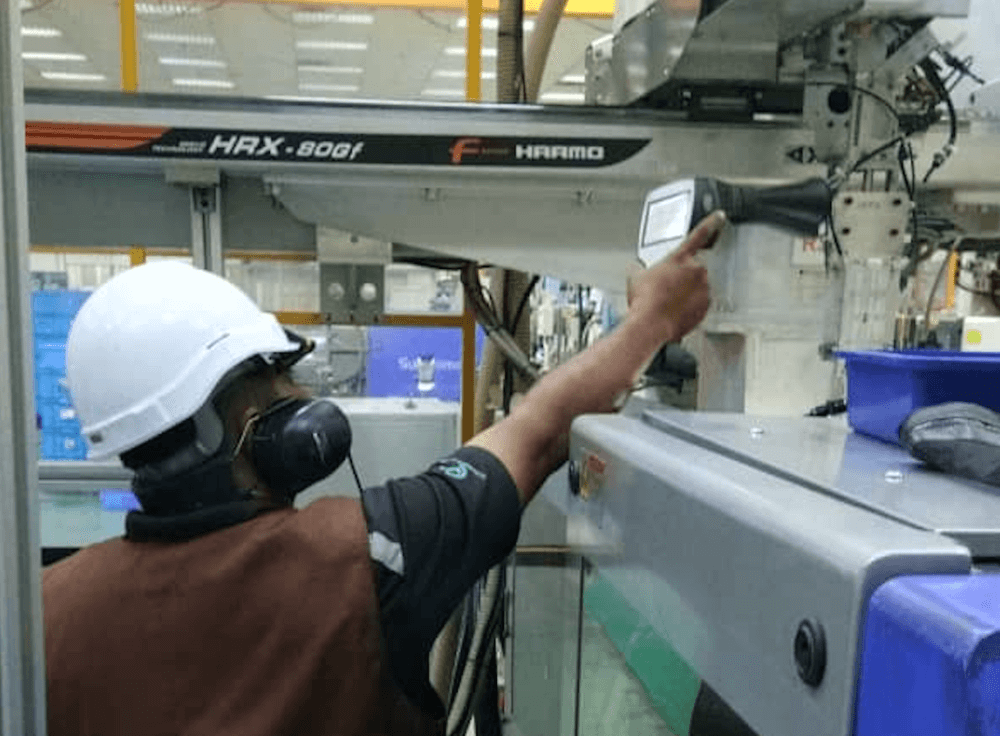
We start by measuring the baseline energy use or air volume of the existing plant air consumption by undertaking a Flow or Energy Demand Survey. We analyse the baseline measurements and if we find your plant has more leaks than recommended under Best Operating Practice, we will suggest an Ultrasonic Leak Survey to identify compressed air leaks.
We do a thorough survey of all parts of your compressed air system. We find the leaks, quantify how big they are, and then tag, photograph, and document them.
We present you with a report containing a leak loss volume, location and repair option of each leak that we found.
Each leak points is deported by detail information that prioritises the leaks by size and cost and specifies recommended fittings for repair, which will also reduce leak incidence in the future.
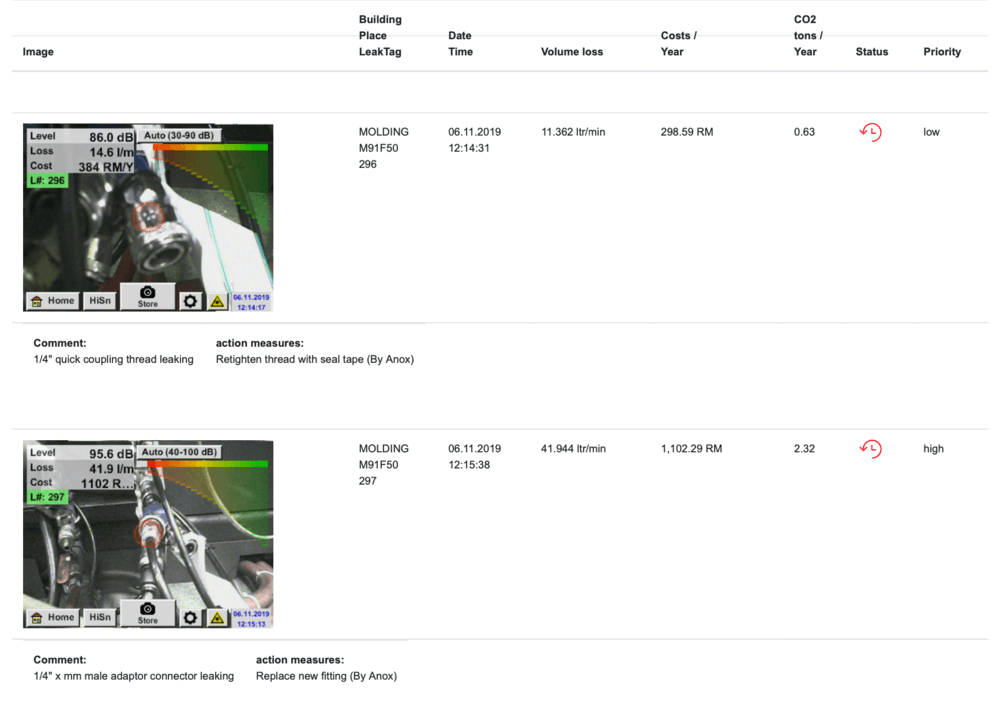
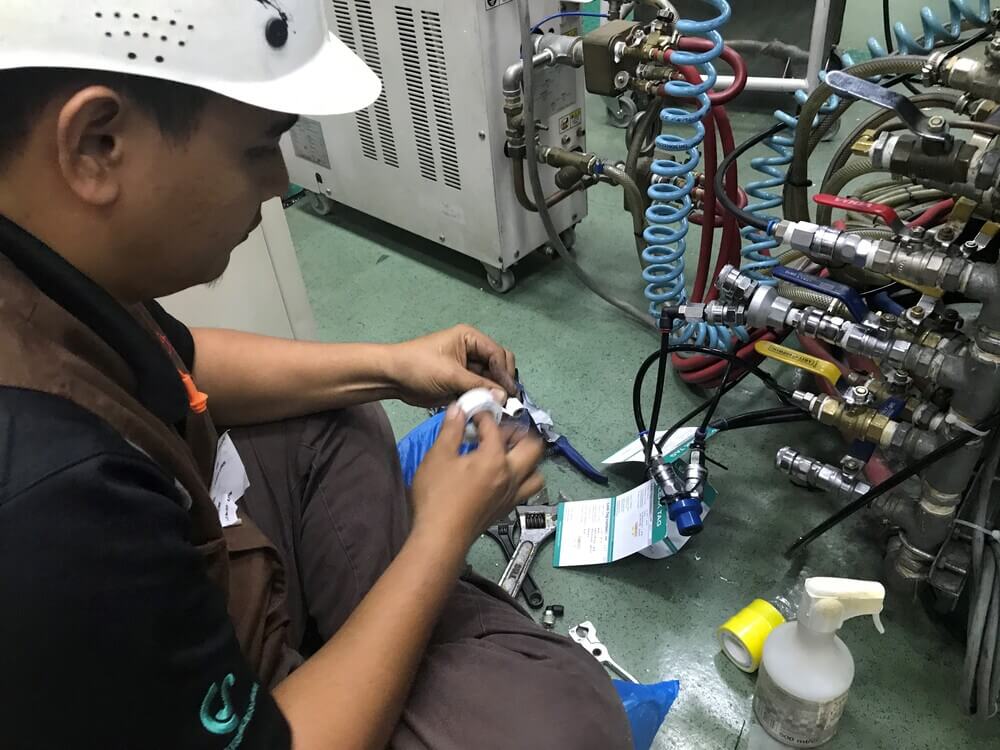
Your maintenance department or preferred contractor can undertake the repairs, using our Report as guidance, or our team can do this work using an Energy Savings Guarantee with usually less than one year payback.
We re-measure energy use or air volume after to prove that after implement the solution with leak repairs have resulted in the energy and cost savings and improved compressor capacity that we predicted.
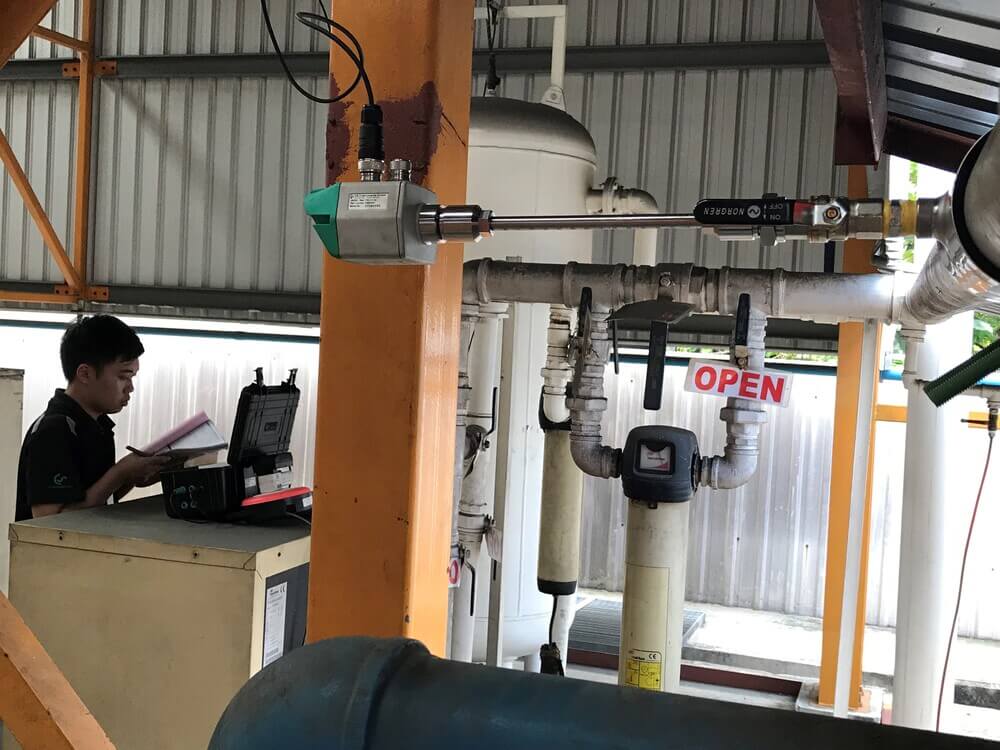
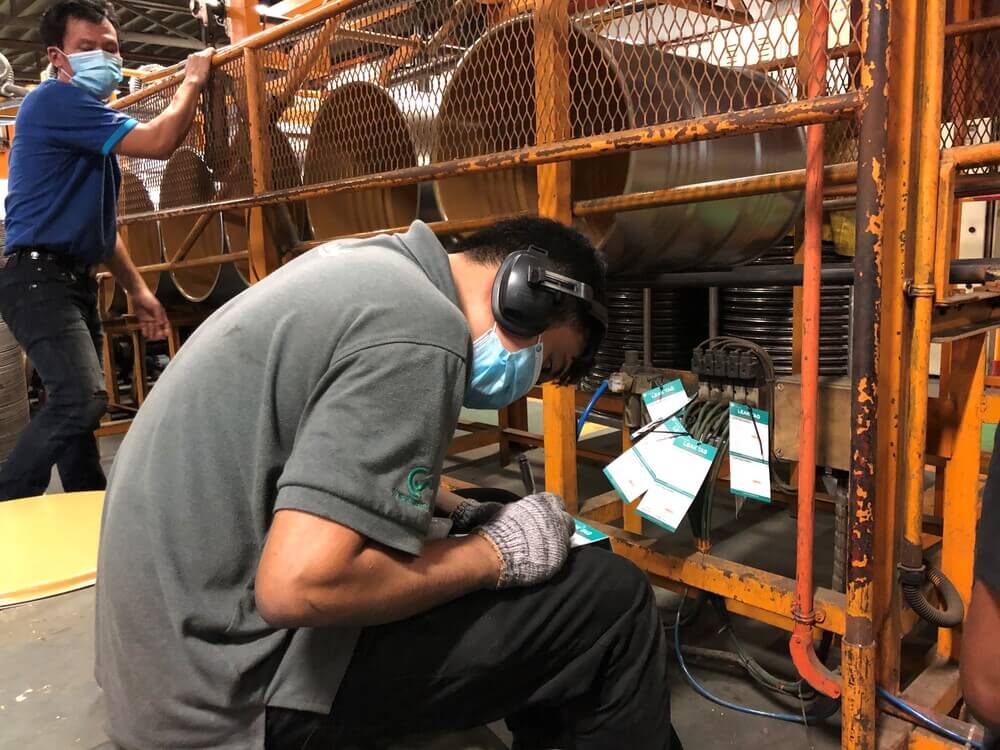
“Air Leak Audit” is one of the most cost effective ways to do find, repair, keep measure and monitor the leakage. Once you able to manage those leakage in your plant, you are not only stop wasting money, you also improve your plant efficiency:
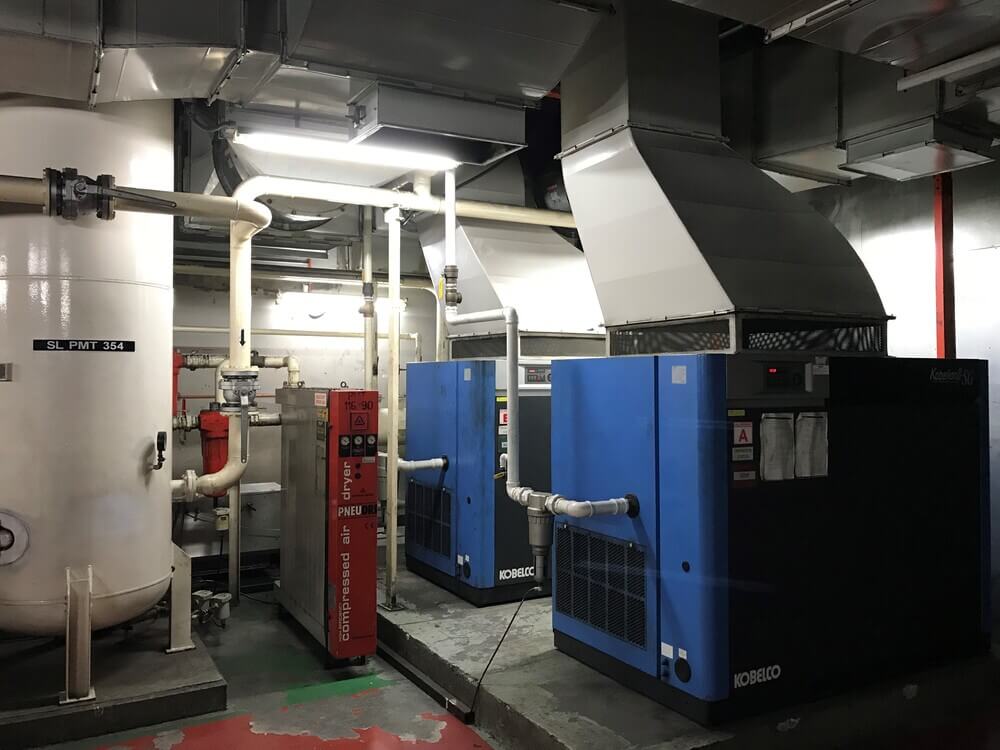
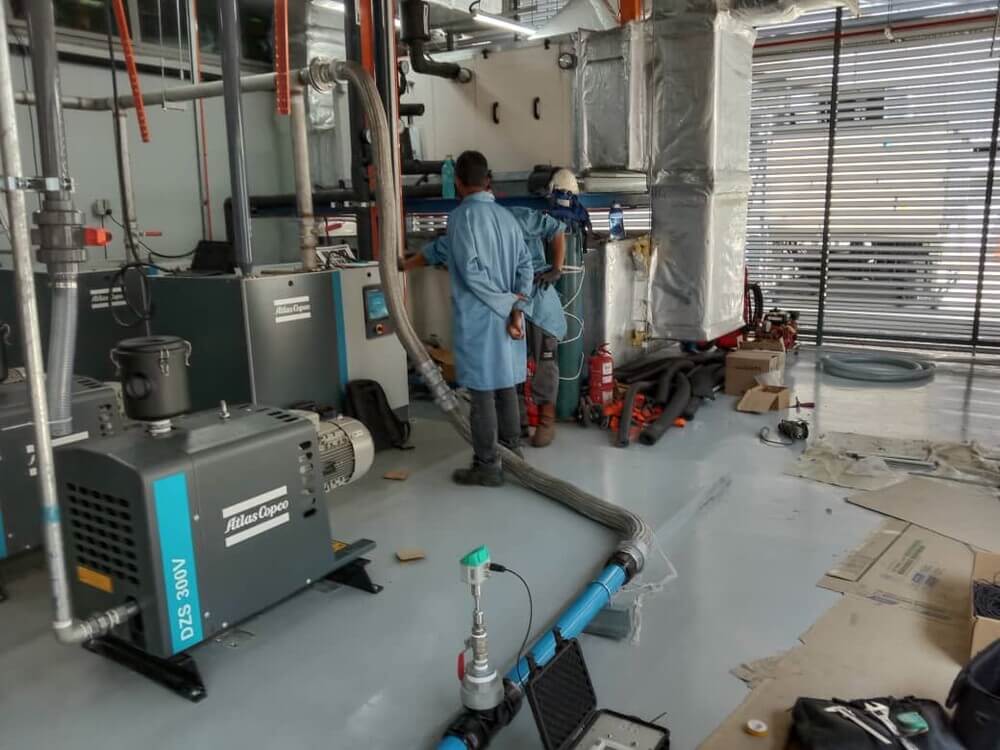
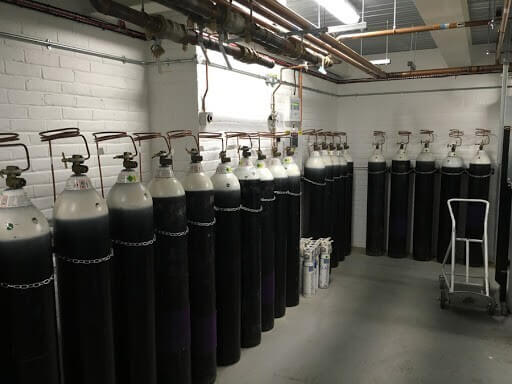
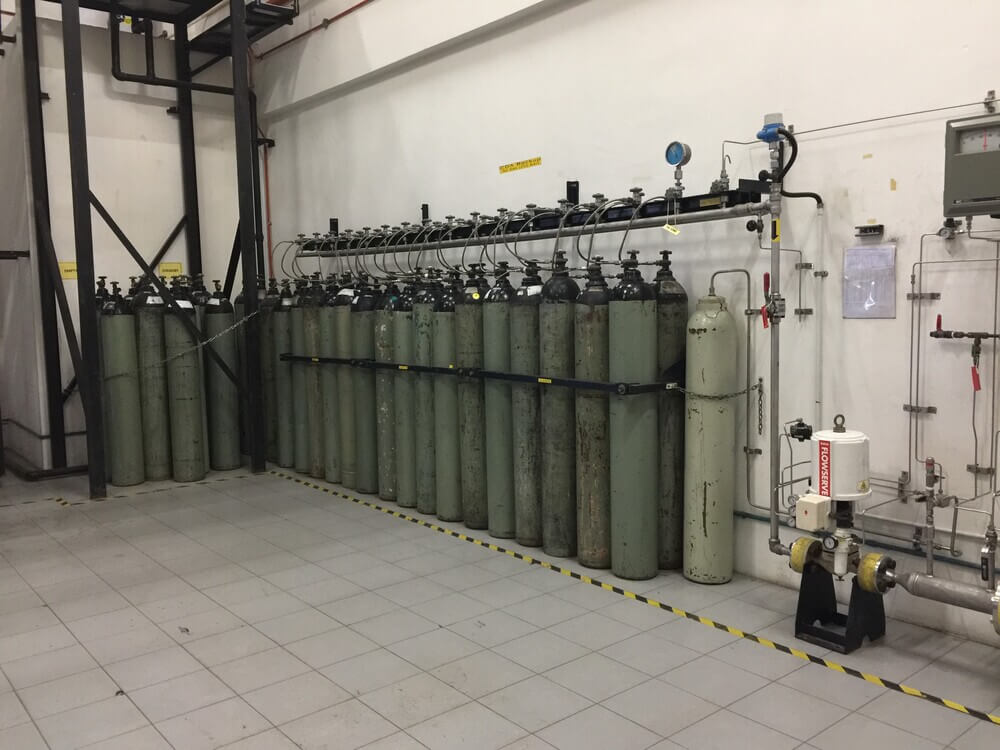
Yet many compressed air, gas and vacuum systems are compromised by wear and poor maintenance practices, which contribute to the greatest waste of all—the ever-present leaks. These leaks can be hidden behind machines, at connection points, overhead in fixed pipes, or in cracked pipes or worn hoses. The most common leak example as below: